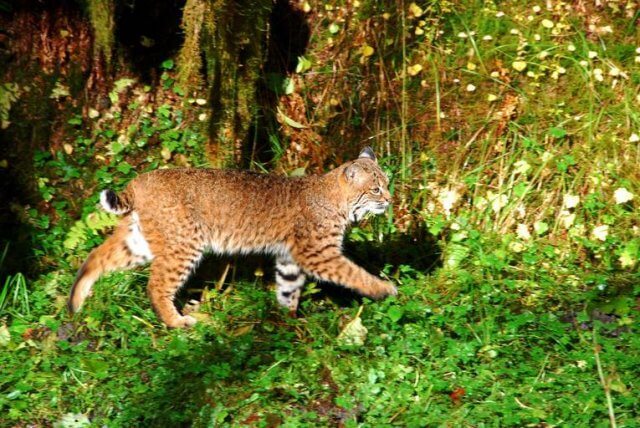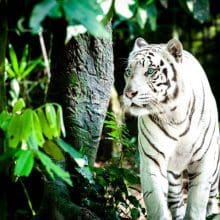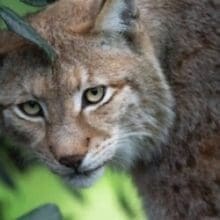Captivating Encounters: World of Florida Bobcats in Captivity
Captivating Encounters:
Exploring Captivating Experiences
Captivating Encounters: Florida, known for its diverse wildlife, is home to a fascinating creature – the Florida bobcat. These elusive and captivating felines have long intrigued researchers and wildlife enthusiasts alike. In recent years, the practice of keeping bobcats in captivity has gained popularity, providing a unique opportunity for people to observe and learn about these magnificent animals up close. Let’s delve into the world of Florida bobcats in captivity and explore the benefits and challenges associated with this practice.
The Appeal of Captive Bobcats
Bobcats are native to Florida and are known for their striking appearance, with their short tails, tufted ears, and distinctive spotted coats. Their elusive nature makes them difficult to spot in the wild, making captive bobcats a valuable resource for education and research. Here are some reasons why people find captive bobcats so appealing:
- Education: Captive bobcats offer a unique opportunity for educational institutions, wildlife centers, and zoos to teach the public about these elusive creatures. Visitors can observe their behavior, learn about their habitat, and gain a deeper understanding of their role in the ecosystem.
- Conservation: By keeping bobcats in captivity, researchers can study their behavior, reproductive patterns, and health, contributing to conservation efforts. This knowledge can help develop strategies to protect bobcat populations in the wild and ensure their long-term survival.
- Rehabilitation: Captive bobcats also play a crucial role in rehabilitating injured or orphaned individuals. Wildlife rehabilitation centers provide a safe environment for these animals to recover before being released back into the wild.
The Challenges of Captive Bobcat Care
While the benefits of captive bobcats are evident, there are also significant challenges associated with their care. These challenges must be carefully addressed to ensure the well-being of the animals and the success of conservation efforts. Here are some key challenges:
- Space Requirements: Bobcats are solitary animals that require ample space to roam and exhibit natural behaviors. Providing large enclosures that mimic their natural habitat is essential for their physical and mental well-being.
- Diet and Nutrition: Captive bobcats must be fed a balanced diet that replicates their natural prey. This includes a variety of meats, such as rabbits, rodents, and birds. Meeting their nutritional needs can be challenging and requires careful planning and monitoring.
- Enrichment: Bobcats are highly intelligent and active animals. Without proper enrichment, they can become bored and exhibit stereotypical behaviors. Enrichment activities, such as puzzle feeders, climbing structures, and hiding spots, are essential to keep them mentally stimulated.
- Healthcare: Captive bobcats require regular veterinary care to ensure their health and well-being. This includes vaccinations, parasite control, and routine check-ups. Access to experienced veterinarians with expertise in exotic animal care is crucial.
Success Stories: Captive Bobcat Conservation
Despite the challenges, there have been several success stories in captive bobcat conservation. These stories highlight the positive impact that well-managed captive populations can have on the species as a whole. Here are two notable examples:
examples:
The Florida Panther National Wildlife Refuge
The Florida Panther National Wildlife Refuge, located in southwestern Florida, has played a vital role in the recovery of the endangered Florida panther, a subspecies of the bobcat. The refuge maintains a captive breeding program, where injured or orphaned panthers are rehabilitated and, if unable to be released, become part of the captive population. This program has helped increase the panther population and ensure genetic diversity, contributing to the species’ overall survival.
The Big Cat Rescue
The Big Cat Rescue, a non-profit organization based in Tampa, Florida, focuses on rescuing and providing lifelong care for big cats, including bobcats. They offer educational tours to the public, allowing visitors to learn about the challenges faced by captive bobcats and the importance of conservation. The organization also advocates for stronger regulations on private ownership of exotic animals, aiming to protect bobcats and other big cats from exploitation and abuse.
Conclusion
Captivating encounters with Florida bobcats in captivity offer a unique opportunity for education, research, and conservation. By providing a safe and enriching environment, captive bobcats can contribute to our understanding of these elusive creatures and help protect their wild counterparts. However, it is crucial to address the challenges associated with their care, ensuring their physical and mental well-being. Through successful examples like the Florida Panther National Wildlife Refuge and the Big Cat Rescue, we can see the positive impact that well-managed captive populations can have on the conservation of bobcats and other big cats. By striking a balance between education, research, and animal welfare, we can continue to appreciate and protect the captivating world of Florida bobcats.
Unleashing the Love: A Visit to Big Cat Rescue and the Majestic Big Cats




